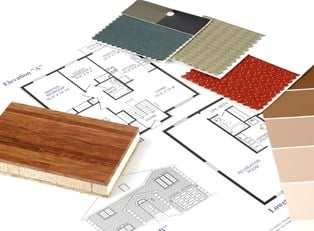Interior design is the practice of designing and decorating the appearance of a room. It utilizes a blend of technical and aesthetic elements. The architectural components involved include things such as window size, ceiling slope, and wall placement. Common artistic considerations of interior design are light fixture installment, color of carpeting, and choice of flooring. Owners or building managers usually contract with a trained specialist to oversee the interior design of spaces.
At one time, interior design was a concept used only by the aristocracy to maximize the internal spaces of grand, elaborate estates. Today, no matter what the scale of the project, a major part of the project is space consideration. Both skyscrapers and small homes are designed to be efficient, functional, and attractive.
Space partitions, wall angles, and window fittings are some of the choices that provide the most-interesting aspects to the design process. These elements can change the way the space feels and looks. Other decisions that fall in this category are wood paneling, fireplace grates, and decorative light fixtures.
Involvement
Design entails more than good looks. Structural support, plumbing, and wiring are technical elements that are woven into the building plan. A number of professionals coordinate major decisions such as appliance location and wall placement.
A professional interior designer is chosen by many people when planning a given space. Typically, experts work for design firms. There are independent contractors or staff members of building and architectural related companies that can be hired. Designers work with clients to personalize an environment that satisfies their desires and vision, while maximizing assets such as rustic wood paneling or natural light.
Interior decorating and interior designing are not the same. They do, however, overlap. Color schemes and moveable fixtures like furniture or artwork create an aura in a space. The help of an interior decorator may be elicited to change the way a room feels or looks. An interior designer will be more concerned about the lighting scheme and floor plan.
Tasks and Responsibilities
Before working as an interior designer, those in training typically begin as apprentices for interior designers who have more experience. Large design firms accept only designers that have education and training from a reputable design house or school. Interior designers are artistic, imaginative, and creative. They also need be skilled, organized, and disciplined business people. With hard work, interior design can be a fulfilling and rewarding career, but it requires dedication, vision, technical proficiency, and energy.
Interior designers are members of a service rendering profession and their success depends on the ability to keep clients satisfied. They must understand management strategies, interpersonal communication, and technical and artistic project requirements.



